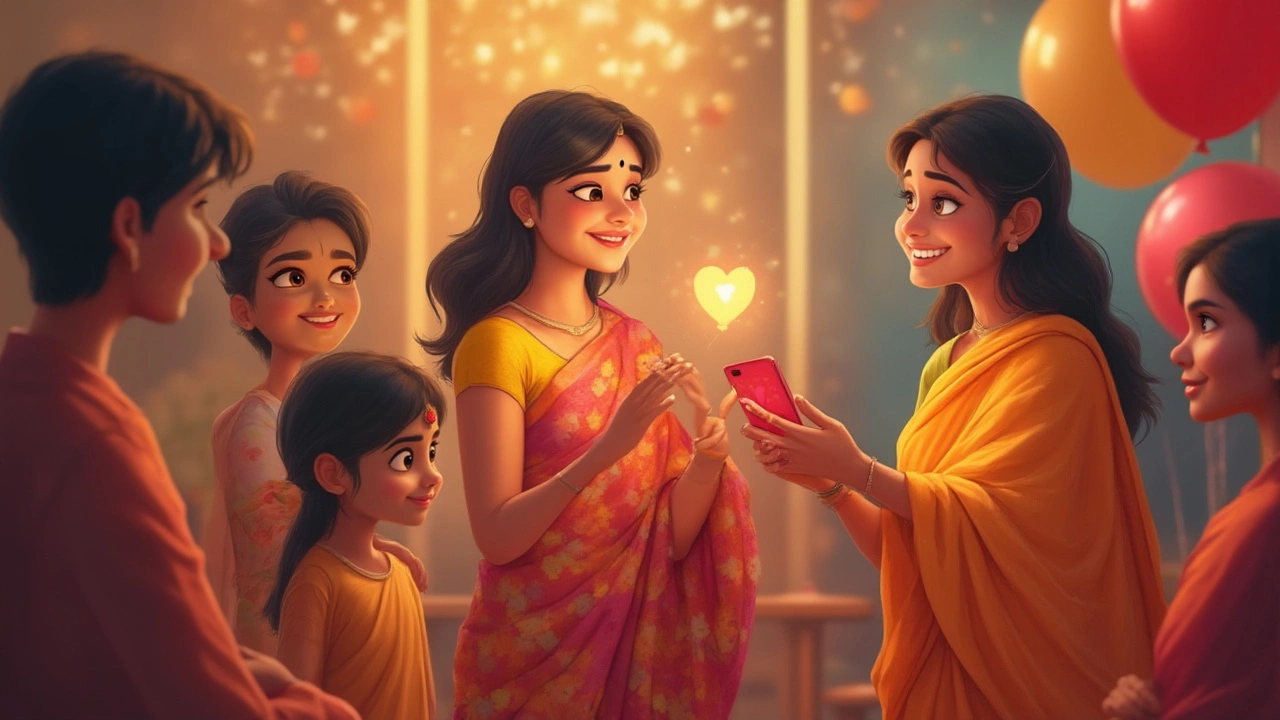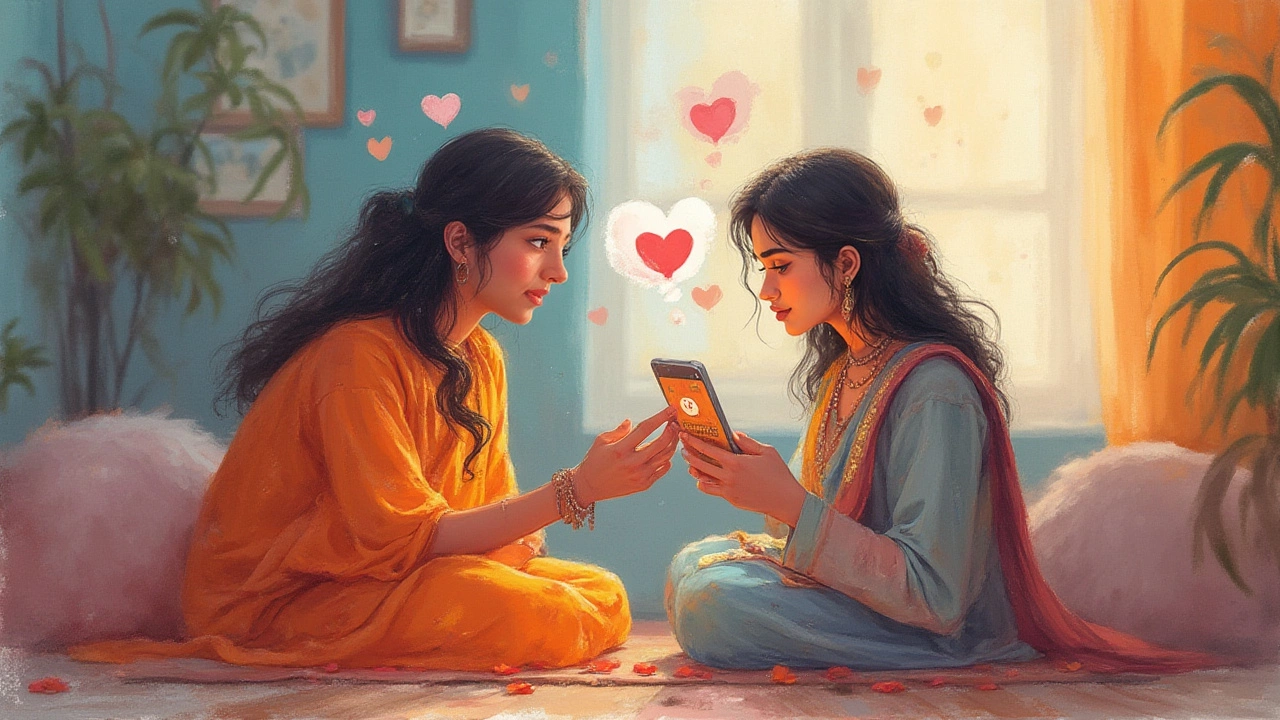What Does the Heart Emoji Mean in Birthday Wishes? Understanding the ❤ Symbol

It shows up everywhere: the heart emoji. But how often do you stop and think about it when you see it tucked into a birthday wish? People will pour their feelings into a handful of well-wishes and slap on the classic red heart. And right away, questions start: Is it love? Is it friendship? Is it just habit? This punchy little symbol, so simple and universal, can leave you wondering exactly what’s behind it—especially when it pops up in a birthday message directed at you or your kid.
The Universal Language of the Heart Emoji in Birthday Messages
The heart emoji—that little red ❤—is about as global as it gets. Even people who don’t share a language, or can’t spell a word in English, recognize the feeling behind it. It leans into warmth, appreciation, and affection, but it doesn’t stop there. Some stats say the red heart is the world’s most shared emoji on platforms like Facebook and Instagram, especially among birthday posts. Something like 15% of all birthday-related posts or messages feature that little red heart. Think about that. That’s millions of birthdays and just as many different feelings.
So what’s going on? Why do we toss the heart into a birthday message? The origin is rooted in our desire to make digital messages feel less robotic, more personal. Text can be dry, and the heart packs in what words can't always convey—"Hey, you matter to me." With my son Colton, I know every birthday card is going to have a heart somewhere, whether it’s from his grandma or his best friend from school. Even if people pound out the same "Happy Birthday!" year after year, they’ll still stick in a heart, to make sure it feels like a hug and not just an empty gesture.
What makes it so universal is its flexibility. You don’t have to love someone in a romantic sense to drop them a heart. You might use it for your cousin, your coworker, or someone you’ve known since you were seven. It’s shorthand for, "I think you’re great—in whatever way feels right." The heart smooths out awkwardness, bypasses the need for fancy words, and lands the emotion where you want it.
Emojis, especially the heart, fill the gap that opened when we started living on our phones. A Yale University study published in 2022 even found that people read heart emojis as genuine signals of connection—often more so than a block of text with polite wishes. So, if you’re trying to make your birthday greeting pop, a single ❤ can hit harder than a paragraph.
Why Do People Use ❤ in Birthday Wishes?
Alright, so the why. It’s got layers, depending on the relationship, the context, and the way you communicate.
The easiest reason: tradition. Once people get rolling with emojis, it’s hard to go back. They see their friends drop a heart into birthday wishes, so they do too. Over time, it feels almost required—a little signoff to say, “I actually mean this.”
Then there's the softness factor. Some people struggle with strong words or big emotions in writing. I remember watching Colton puzzle over signing his friend's birthday card. He didn't want to go all-in with "Love you"—but a heart was an easy way to say, "You’re my dude. Hope you have the best day."
It can also stand in for a hug. Especially when you can’t be there in person, or when it feels like COVID distance is never-ending, a heart says, “wish I could be there.” One quick press, and you’re closer, at least for a second.
Of course, not everyone uses hearts the same way. Some cultures lean in hard, while others pull back. In the United States and Europe, hearts fly fast and casual. In Japan, you might see more flowers or smiley faces in birthday notes, though the heart has its place among close friends.
Sometimes, people stress about sending the wrong signal. For instance, in a work environment, tossing a heart into a message can come across as extra friendly—or even weird—if you're not close. Etiquette experts usually say: if you wouldn’t high-five or hug the person in real life, maybe go for a smiley face instead of a heart.
But among friends and family? It’s almost expected. My mom will not send a message without at least three heart emojis—one red, one pink, sometimes a purple one if she’s feeling wild. It’s her signature, and you can feel her warmth come through. No one in the family doubts she loves them, but the heart, in a way, makes sure you never forget.
If you’re still unsure, try reading the rest of the message. If it’s packed with inside jokes or warm words, the heart is a bonus. If it’s short and perfunctory—maybe it’s a polite gesture. Either way, the intent is usually positive.

When Does a Heart in a Birthday Wish Mean Romance?
This is the question that can keep people up at night: Is this flirting? Sometimes it is. Sometimes, it’s just universal digital love in its most basic, everyday form.
The color of the heart can make a difference. The red heart sometimes gets a reputation for romance, but it’s not a rule set in stone. Some data from messaging apps shows that teens use the red heart for everyone—sons, grandmas, teammates—whereas adults sometimes reserve it for closer, more personal connections.
If the sender is someone you’ve flirted with, or if there’s context (they add "I wish I could celebrate with you ❤"), you can read the heart as a nudge toward romance. In those cases, it can be a small way to test the waters without risking total embarrassment.
But if it’s your best friend since middle school? Probably not. Your brother? Definitely not. Your boss? Well, you might want to double-check what HR has to say about that.
Let’s make it more fun. Here’s a quick table showing how people interpret hearts in birthday wishes, based on a 2023 Pew Research Group survey:
| Sender | Heart Emoji Meaning | Chance of Romance (%) |
|---|---|---|
| Romantic Partner | Affection & Love | 95 |
| Close Friend | Platonic Love/Strong Friendship | 10 |
| Family Member | Family Love, Support | 2 |
| Co-worker | Positive, Polite | 1 |
| New Acquaintance (Flirty Context) | Possible Interest | 35 |
As you can see, the heart only gets a romantic stamp when everything else lines up to support that vibe. Your gut will usually pick up on the difference.
It’s worth knowing that the digital world has changed the rules. A heart isn’t the same as writing “I love you.” It's light, friendly, and open-ended until you pile on more signals. I’ve seen Colton get birthday wishes with hearts from everyone—little girls in his class, his soccer coach, even one from his grandad—and not once did it spin into romance drama. Hearts are safe, until context makes them more.
Tips for Adding Meaning to Your Own Birthday Wishes
If you want to make your own digital birthday wishes stand out, don’t just rely on the heart—though it’s a great start. Drop it, but pair it with words and touches that actually reflect the relationship.
- Personalize it. Add something only the birthday person will get. Reference their favorite band or something funny that happened last year. The more specific, the better.
- Mix your emojis. A heart with a cake or balloon goes a long way. Multiple emojis keep the mood light and help the message feel more festive.
- Pick your color. If you feel close, use the classic red. For friends or acquaintances, try a yellow or blue heart, which can show platonic love or support without crossing lines.
- Be direct. Don’t be afraid to say what you mean. If you appreciate someone, spell it out—even just one extra sentence (“You always make people laugh—hope you get cake as sweet as you are!”) leaves a bigger impact than just “HBD ❤.”
- Follow their style. If the person usually skips emojis, a simple heartfelt wish might stand out more than piling on the hearts. If they’re an emoji fanatic, bring on the hearts and sparkles.
- Don’t overthink it. Most people see the ❤ as a friendly, positive sign. The real mistake is not celebrating your people at all.
If you want your wish to land, imagine how you’d say it face-to-face. Would you give them a high-five, a bear hug, or just a smile? Let that shape your message.
Some folks might see your heart emoji and read a deeper meaning—don’t stress. If a misunderstanding pops up, it’s usually cleared up with a quick, honest text. But if you do want to take a leap and drop a flirty heart, maybe pair it with something a little more obvious, just to make sure your meaning isn’t lost in the emoji soup.
Birthdays are one of the few times you get a free pass to be as expressive and supportive as you want. Emojis, especially the heart, make that easier for everyone. So next time you see that ❤ in a wish or message, remember—it’s doing the hard work of shaping digital feelings into something a little warmer and a little more human.